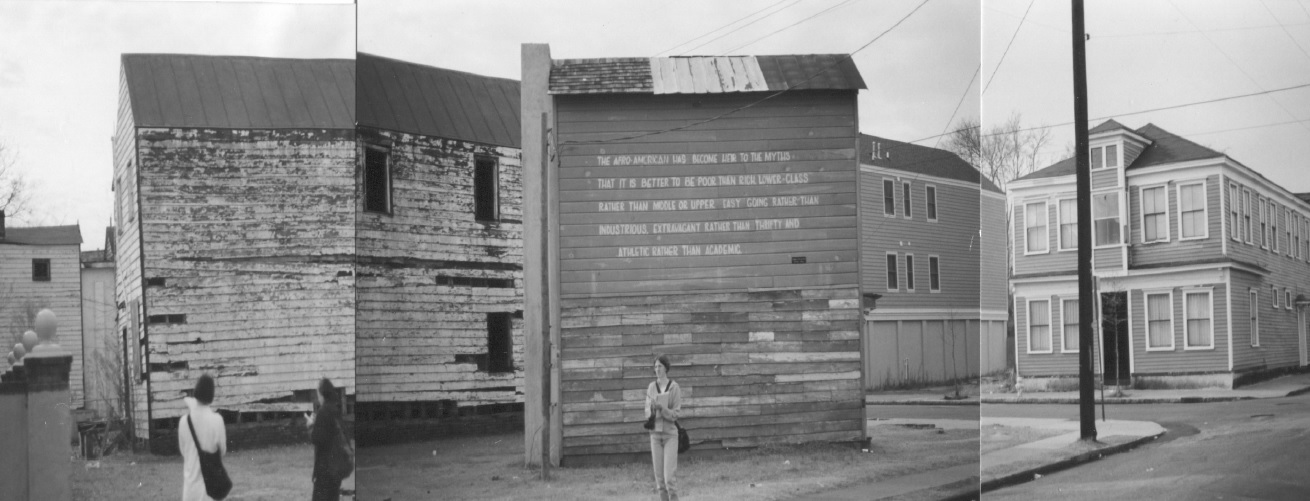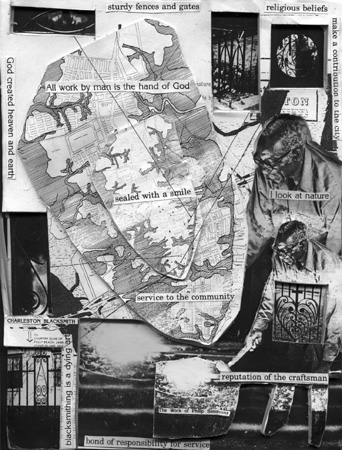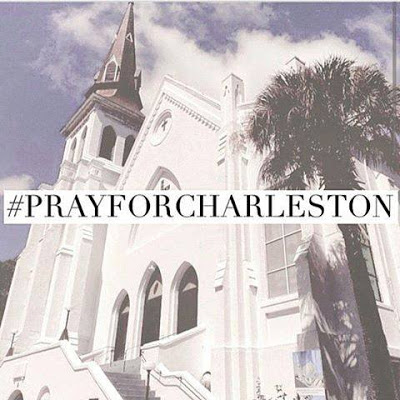I love the idea of creating a place for people to experience life, make memories, and build friendships. It is a lot of pressure to put on sticks and bricks, but with the right focus it can happen. We can create better solutions that provide the infrastructure needed for living a life full of joy, hope, and love. A building can stand as something more than just shelter, a building can be a place of refuge or celebration. A single heinous act cannot take that away.
I first visited Charleston South Carolina in 1996 with Professor Barton’s studio to start our design project for that semester. We did the tour of historic Charleston that everyone does when visiting. Justin Green and I skipped the football watching and walked the streets of downtown while others watched UVA lose their first football game that year. We all then traveled to our design site in a poor section of Charleston. As I learned that day, it was only poor in the sense of money, the neighborhood was rich with history, people, and culture.

This was the first design project that I was assigned where I needed to understand a culture that exists in a place different from my culture. This was a culture that was completely foreign to me from my days of growing up in West Virginia and Virginia. The oppression and brutality that African-Americans have experienced in Charleston is real and apparent on every street corner. It is in every story from those mansions on the peninsula to the poor neighborhood where I was designing. It is preserved in the buildings from small shacks to slave auction houses to church cemeteries. The place tells a story that we should all know and understand. However, it is not just a story of evil, it is a beautiful melting pot of cultures, music, dance, love, joy, and hope. The sounds coming from the windows of houses in that neighborhood were alive with emotion. The African colored flag flying over the neighborhoods told the story of heritage. The art installation challenged those living for today to look towards tomorrow.


In 2000 I returned to Charleston to do my thesis work. I spent time trying to figure out how to use architecture to build bridges of understanding between different cultures in a community. My focus was on telling the story of commonality through understanding the culture through design. I worked to find ways to use the built environment to celebrate the physical, cultural, and spiritual place.
I have returned to Charleston many times – I do love that town. It speaks to me architecturally, culturally, musically, and emotionally. It is not one thing or one building, it is the place that has been created over many years that is so moving. It is church steeples, side porches, gardens, gates, and cobblestones. It is the history that you can feel and the hope that exists in the market downtown and the vibrancy on the streets. It is not just the built world, but the built community. Charleston is a beautiful town with beautiful people who come from many backgrounds and histories. It is a place where we can celebrate diversity and hope for the future.







